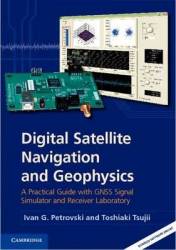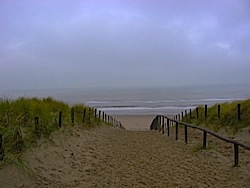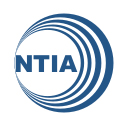
Digital Satellite Navigation and Geophysics: A Practical Guide with GNSS Signal Simulator and Receiver Laboratory
by Ivan G. Petrovski and Toshiaki Tsujii
Cambridge University Press 2012
ISBN-13: 9780521760546
This textbook describes GPS and GLONASS signals, as well as geophysical theory necessary for high accuracy calculation of satellite and user positions. The book is accompanied a free academic version of software for a software receiver and signal simulator.
Digital Satellite Navigation and Geophysics: A Practical Guide with GNSS Signal Simulator and Receiver Laboratory
by Ivan G. Petrovski and Toshiaki Tsujii
Cambridge University Press 2012
ISBN-13: 9780521760546
This textbook describes GPS and GLONASS signals, as well as geophysical theory necessary for high accuracy calculation of satellite and user positions. The book is accompanied a free academic version of software for a software receiver and signal simulator.
The authors write in an accessible, conversational, style with many enjoyable descriptions of historical context. This is most welcome, and makes for pleasant reading.
It does provide a thorough treatment of the geophysics associated with GNSS, but is actually applicable to a much wider audience than geophysicists, and the title could dissuade some potential readers. This would be a pity, as many readers will benefit from this work.
However, in summarizing some large topics, the authors occasionally overreach. For example, they write, “John Harrison produced the first accurate chronometer . . . resulting in the ability to define coordinates for the first time in history without dead reckoning.” This completely ignores the previously known Lunar Distances method.
Similar overreaching occurs in the authors’ overview of GNSS techniques — for example, in describing positioning without time marks they conflate brute-force search methods with more modern closed-form solutions.
However, these quibbles will probably be noticed by pedants alone and should not distract most readers from the main content.
In particular, the primary value of this book is in the analysis and processing of satellite signals, including GLONASS and BOC signals, and the accompanying software. Although limited to predefined sampling and IF frequencies and receiver parameters, the software is still surprisingly comprehensive in scope. It offers a useful learning tool for the reader.
The main content of the book is a valuable addition to the still-small universe of GNSS textbooks. Among other topics, it covers the essential theory behind software receivers and signal simulators, key applications in navigation and geophysics, including INS aiding, scintillation monitoring and earthquake studies; physical explanations of the similarity of code delay and phase advance of GNSS signals, and negative cross-correlation between scintillation intensity and phase variations.
The authors provide a number of interesting details and novelties not found in other GNSS texts. For example, the content of each chapter is summarized by where it fits in a system-level block diagram (see the accompanying figure).
In retrospect, a more enlightening title for this publication might have been GPS, GLONASS and BOC Signals, Usage, and Analysis, as this book offers a more comprehensive treatment of the various satellite signals than previous GNSS texts. For that reason alone, it is worth having on your shelf.





